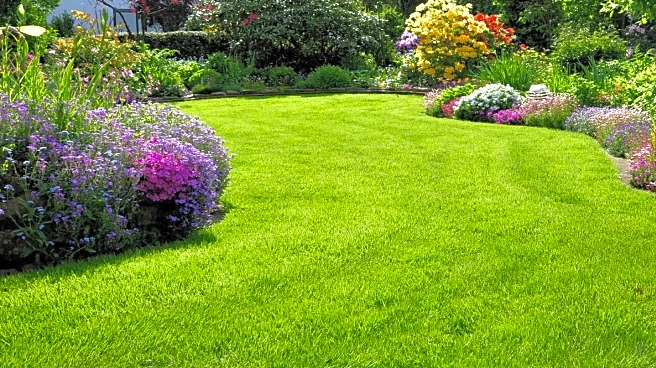What's Happening?
As fall approaches, lawn care experts from Lowe's and Scotts emphasize the importance of preparing lawns for the upcoming winter to ensure a healthy start in spring. Key recommendations include applying
fall fertilizers to strengthen grass and repair roots damaged by summer heat. Experts suggest using products like Scotts Turf Builder WinterGuard to feed lawns and eliminate weeds before they hibernate. Additionally, repairing bare spots and aerating compacted soil are advised to promote better grass growth. Mowing grass shorter, around 2 to 2.5 inches, is recommended to reduce disease risk and improve energy storage. Raking leaves is crucial to prevent smothering grass and plants, with mulching as a viable option for natural fertilization.
Why It's Important?
Proper fall lawn care is essential for maintaining healthy grass and preventing damage during the winter months. By following expert advice, homeowners can ensure their lawns are well-nourished and prepared for spring growth, potentially saving on future repair costs. The application of fertilizers and weed control measures can lead to a more robust lawn, reducing the need for extensive maintenance in the spring. Additionally, addressing bare spots and compacted soil can improve the overall appearance and health of the lawn, enhancing property value and curb appeal.
What's Next?
Homeowners are encouraged to implement these lawn care strategies before the first frost to maximize effectiveness. As the season progresses, continued monitoring and maintenance, such as regular watering and gradual mowing adjustments, will be necessary to support lawn health. The use of specific products like Scotts Turf Builder Rapid Grass for larger areas and Scotts EZ Seed Patch and Repair for smaller patches can aid in achieving desired results. As fall transitions to winter, homeowners should remain vigilant in their lawn care efforts to ensure a successful spring revival.
Beyond the Headlines
The emphasis on fall lawn care highlights broader environmental considerations, such as the role of composting leaves in reducing waste and providing natural fertilizer. This practice aligns with sustainable gardening efforts, promoting eco-friendly solutions to common lawn care challenges. Additionally, the focus on weed control and soil aeration reflects a growing awareness of the importance of maintaining healthy ecosystems within residential areas.












